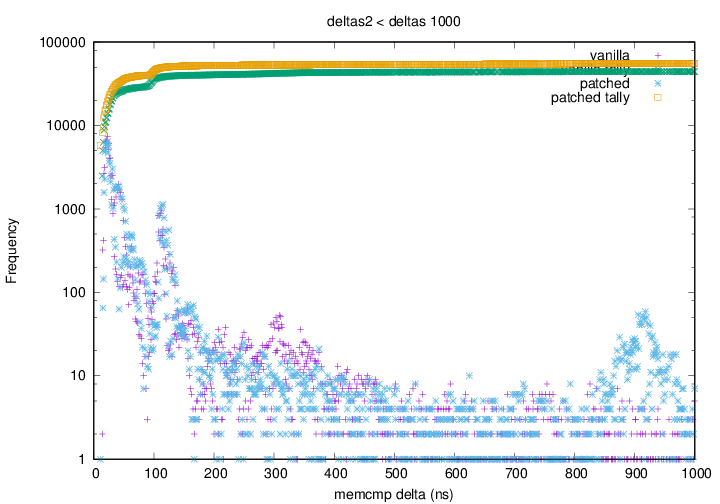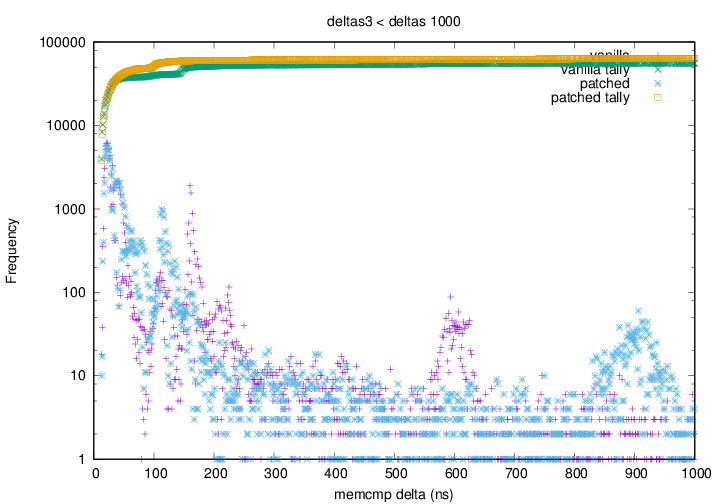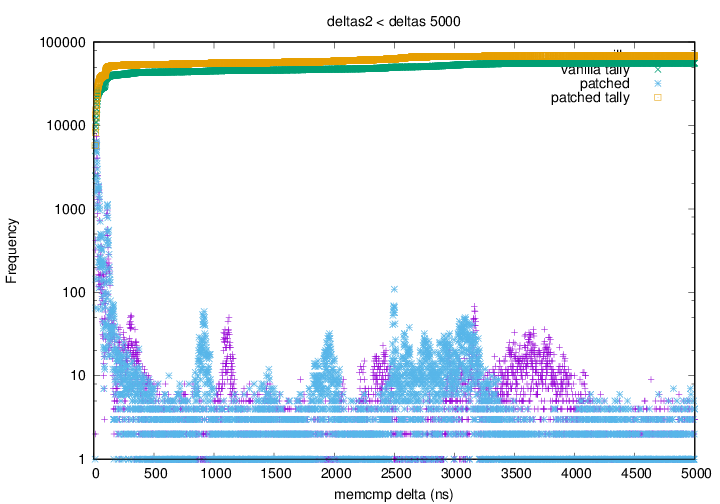This entry is a followup to part I which you should absolutely read here before continuing on.
Where we left off
We concluded that while a vectorised memcmp() is a win, there are
some cases where it won't quite perform.
The overhead of enabling ALTIVEC
In the kernel we explicitly don't touch ALTIVEC unless we need to, this means that in the general case we can leave the userspace registers in place and not have do anything to service a syscall for a process.
This means that if we do want to use ALTIVEC in the kernel, there is some setup that must be done. Notably, we must enable the facility (a potentially time consuming move to MSR), save off the registers (if userspace we using them) and an inevitable restore later on.
If all this needs to be done for a memcmp() in the order of tens of
bytes then it really wasn't worth it.
There are two reasons that memcmp() might go for a small number of
bytes, firstly and trivially detectable is simply that parameter n is
small. The other is harder to detect, if the memcmp() is going to fail
(return non zero) early then it also wasn't worth enabling ALTIVEC.
Detecting early failures
Right at the start of memcmp(), before enabling ALTIVEC, the first
64 bytes are checked using general purpose registers. Why the first 64
bytes, well why not? In a strange twist of fate 64 bytes happens to be
the amount of bytes in four ALTIVEC registers (128 bits per register,
so 16 bytes multiplied by 4) and by utter coincidence that happens to
be the stride of the ALTIVEC compare loop.
What does this all look like
Well unlike part I the results appear slightly less consistent across three runs of measurement but there are some very key differences with part I. The trends do appear to be the same across all three runs, just less pronounced - why this is is unclear.
The difference between run two and run three clipped at deltas of
1000ns is interesting:

vs

The results are similar except for a spike in the amount of deltas in
the unpatched kernel at around 600ns. This is not present in the first
sample (deltas1) of data. There are a number of reasons why this spike
could have appeared here, it is possible that the kernel or hardware
did something under the hood, prefetch could have brought deltas for a
memcmp() that would otherwise have yielded a greater delta into the
600ns range.
What these two graphs do both demonstrate quite clearly is that
optimisations down at the sub 100ns end have resulted in more sub
100ns deltas for the patched kernel, a significant win over the
original data. Zooming out and looking at a graph which includes
deltas up to 5000ns shows that the sub 100ns delta optimisations
haven't noticeably slowed the performance of long duration memcmp(),
 .
.
Conclusion
The small amount of extra development effort has yielded tangible
results in reducing the low end memcmp() times. This second round of
data collection and performance analysis only confirms the that for
any significant amount of comparison, a vectorised loop is
significantly quicker.
The results obtained here show no downside to adopting this approach for all power8 and onwards chips as this new version of the patch solves the performance regression for small compares.